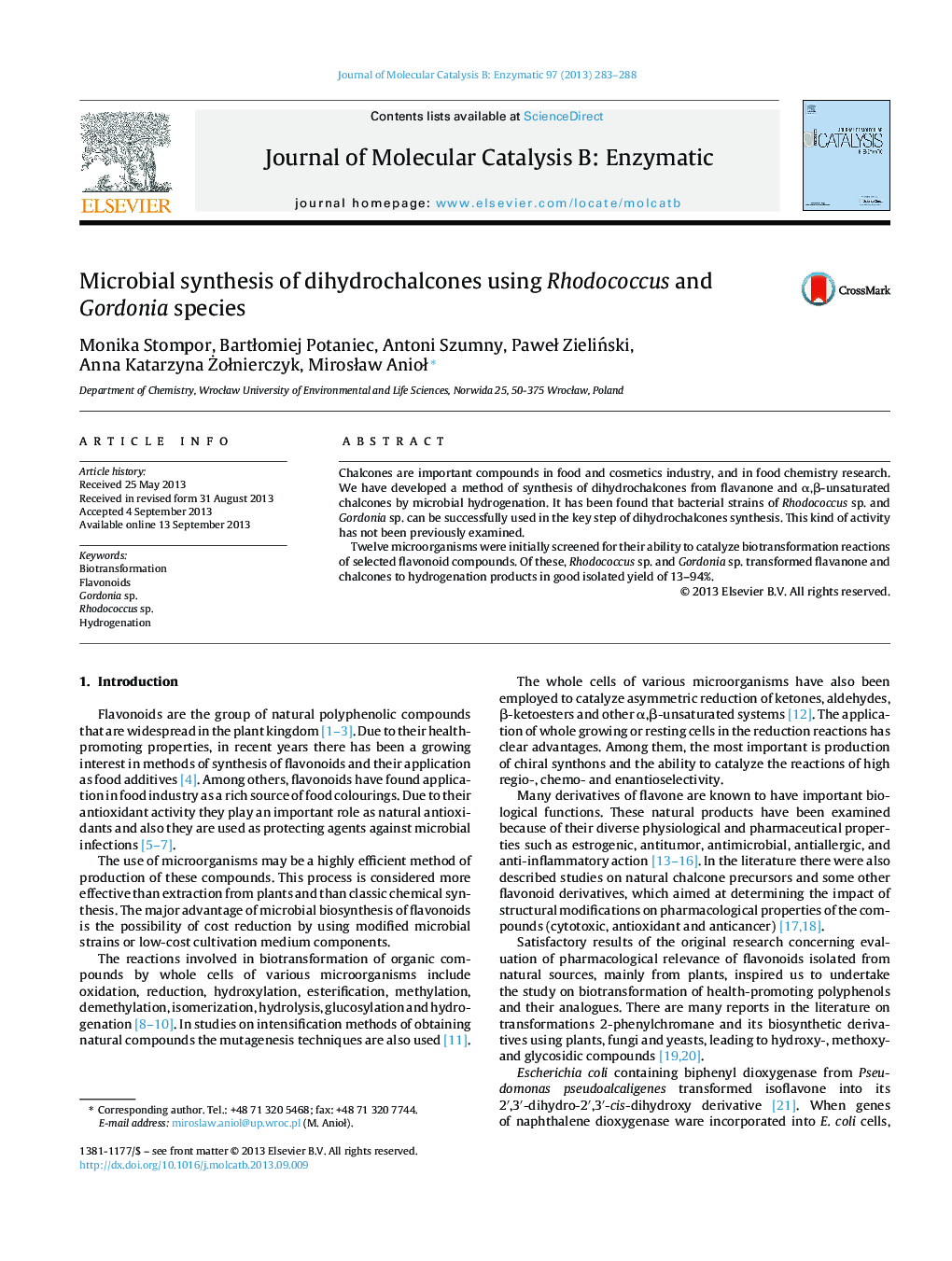| Article ID | Journal | Published Year | Pages | File Type |
|---|---|---|---|---|
| 69620 | Journal of Molecular Catalysis B: Enzymatic | 2013 | 6 Pages |
•Rhodococcus sp. DSM 364 and Gordonia sp. DSM 44456 transform α,β-unsaturated chalcones into dihydrochalcones.•Phloretin is the product of chalconaringenin transformation.•Enzymatic system of Gordonia sp. cleaves the C-ring of the flavanone moiety.•IR, 1H NMR, 13C NMR and HR ESI-MS spectra are studied.
Chalcones are important compounds in food and cosmetics industry, and in food chemistry research. We have developed a method of synthesis of dihydrochalcones from flavanone and α,β-unsaturated chalcones by microbial hydrogenation. It has been found that bacterial strains of Rhodococcus sp. and Gordonia sp. can be successfully used in the key step of dihydrochalcones synthesis. This kind of activity has not been previously examined.Twelve microorganisms were initially screened for their ability to catalyze biotransformation reactions of selected flavonoid compounds. Of these, Rhodococcus sp. and Gordonia sp. transformed flavanone and chalcones to hydrogenation products in good isolated yield of 13–94%.
Graphical abstractFigure optionsDownload full-size imageDownload as PowerPoint slide
